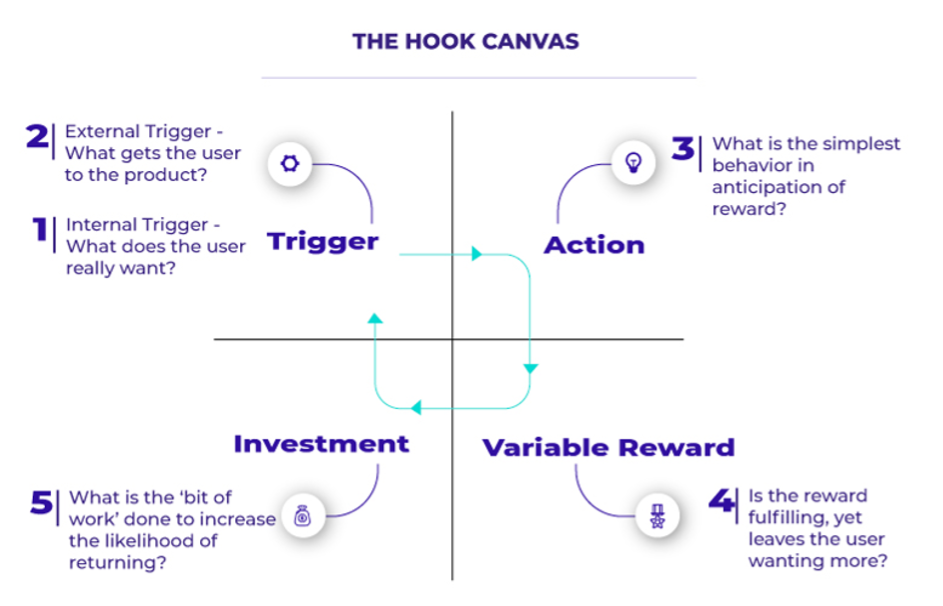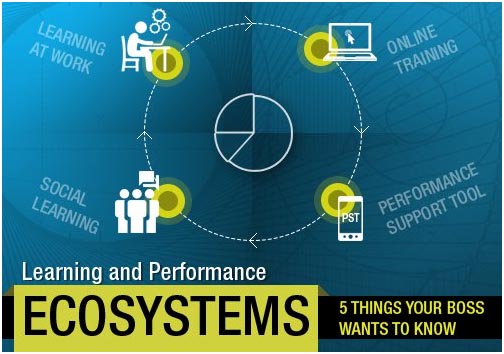
Merely function-focused, objective-oriented training does not work, especially in hybrid workplaces. Learner-centric gamification is the new alternative. In this article, I share gamification design techniques to engage and energize your learners.
Why Is There a Disconnect Between Learners and the Way Training Courses are Designed?
Traditionally, because of the time and distance gaps between trainers, learners, and content, eLearning has always had an “engagement challenge.” With the broader evolution of hybrid workplaces, those challenges, however, have metastasized. Work from home (WFH) mandates have introduced more “learner disconnect” opportunities, adding to the engagement challenge.
Most eLearning programs are function-focused – they’re designed around a specific set of learning objectives – rather than learner-focused. This narrow focus further precipitates learner disengagement, since it doesn’t provide virtual learners the full scope of learning experiences they crave. The limited-focus approach also falls short on course design, which fails to sufficiently stimulate, challenge, engage, and excite the learner.
How Does Gamification Drive Learner Engagement?
In hybrid workplaces, abundant non-work-related distractions heighten the risk of learner disengagement during conventional training courses. To counter this, gamification injects interactivity, competition, and immediate feedback, amplifying engagement and relevance in skill-based learning contexts.
That’s why more L&D professionals are turning to game based and gamified learning to drive engagement. Here’s why:
- Gamification design is based on a learner-centric course design, which personalizes the content based on learner likes and preferences.
- Unlike the restrictive functional focus of traditional eLearning content, gaming content is typically tied to specific learning objectives, to which individual learners relate to.
- By appealing to core learner values, through game based situations, characters, and plots, learners more readily engage with game based learning.
- Elements of rewards and recognition in a game—badges, points, leaderboards—make learners feel appreciated and challenged.
These characteristics compel virtual learners, even those in a hybrid workplace, to persist with game based learning..
How Does a Well-designed Gamification Program Improve Learner Proficiency and Business Performance?
To illustrate the importance of good gamification design, we’ll refer to a contemporary commercial behavioral model (called the Hook Model, developed by entrepreneur, author, and behavioral economist Nir Eyal), which many app developers have adopted. The model helps describe how well-designed gamification programs improve learner engagement, which then translates to higher performing .
Here’s how the 4-phased Hook Model works in relation to gamified learning:
- A well-planned gamification design addresses a “trigger,” creating awareness for the learner to embrace the course, training program, or learning module. For example, “The new HR system goes live next month…be prepared to use it effectively!”
- It incentivizes the learner into action, which typically encourages them to engage with the course to satisfy the initial trigger. For example, “Have fun mastering new features, and learn how to enter your weekly Time Cards in just 3 minutes!”
- Learners are rewarded throughout the “game,” in recognition of their performance. For example, “Publish names of employees who complete all modules, Highest scoring employee etc.”
- Continued outreach and communication with the learner keeps them coming back for more, resulting in entrenched learned behavior. For example, “Don’t enter your Time Cards anymore – New features now allow you to scan 7 days of data in 2 minutes!”
Gamified learning, similar to gaming apps, leverages communication, motivation, recognition, and compulsion to captivate learners. This fosters a habitual skill acquisition process, enhancing job proficiency and ultimately bolstering overall business performance.
How Do You Incorporate Learner-Centered Design for Gamification?
Learner-centered design prioritizes individual learners’ interests and preferences, ensuring immersive and impactful learning experiences. In gamification, this approach ensures elements go beyond superficial rewards, fostering meaningful and enjoyable learning journeys that inspire loyalty and deeper engagement, resulting in more effective skill acquisition.
At EI, our gamification solution is grounded in our Learning and Performance Ecosystem, emphasizing learner engagement and the continuity of learning. By integrating gamification within this ecosystem, we ensure that learners are not only engaged but also supported throughout their learning journey, fostering sustained skill development and performance enhancement.
To successfully gamify an experience, here are a few best practices I recommend. Understand User Needs and Preferences: Begin by understanding learners’ motivation and behavior through in-depth research and detailed persona creation; apply gamification components accordingly.
- Align Gamification Mechanics with User Goals: To make certain that gamification mechanics go in line with learners’ goals, they must assist the learners’ experience and seamlessly motivate the desired behaviors inside the system.
- Tailor the System for All Stakeholders: Make sure that the gamified experience is customized to satisfy a wide range of learner preferences. For instance, make use of cooperative rather than competitive mechanics by applying a balance between competitive and cooperative components.
- Evaluate and Iterate: Assess the effectiveness, and also the reward system on a long-term basis, and proceed to gather feedback, while continuously reassessing user engagement and improving the gamification mechanisms.
- Integrate Gamification Seamlessly: Ensure game components blend with the learner journey in the most seamless way possible, that they only serve to improve the experience, and are not excessive.
- Inspire Through Interactivity and Social Elements: Use interactive and social features to deepen learner engagement, and also foster a sense of community and social sharing both inside and outside the platform to enhance learner experiences.
What Gamification Design Techniques Can You Adopt to Engage and Energize Your Learners?
- Personalization(elements that enable learners to create an identity for themselves within the game).
- Choice of devices:Ensure learners can choose their devices (laptops, tablets, smartphones – and even desktops!) to consume your gamified content.
- App based mobile design:With many virtual workers gravitating to learning on-the-go, it’s vital that you deliver your gaming content in an app based format. For this to succeed, the app design must feature lightweight, small footprint delivery, because not every app user might own unlimited, high-bandwidth mobile data plans.
- Personalized learning paths:Allow learners to craft a path, within the game, that resonates with their learning objectives. This motivates them with greater engagement in the course.
- Building a narrative:These elements may include aspects such as scenes, backdrops, music, sounds, and a general theme of the game. They help create an ambiance of “actual participation,” engagement, and involvement.
- Customized avatars:This allows learners to use caricatures (icons and images) to relate to. Playing a game, as an avatar they empathize with, helps learners better immerse themselves in the game.
- Customized settings:An effective gamification design embraces the belief that learners learn best when they take charge of their settings. Allowing them to customize your gaming content, in terms of the game’s canvas, font colors and pitch size, orientation (portrait or landscape), choice of tones (beeping, ringing) helps make learners feel they’re in “control.”
- Personalized feedback:Provide customized feedback based on learner behavior through the game. This reinforces the idea that the recommendations are indeed tailored to them, and not something generic.
- The storyline(elements that encourage learners to spend time on the learning material).
- Character paths and storylines (story based learning):Organize your gaming content around storylines. Ensure characters, on which the story is based, can branch through multiple paths to accomplish a goal. These underpin the structure around which story based games revolve. This technique offers a more immersive learning experience.
- Quests:Quests, in pursuit of specific learning objectives, are a great way to engage and energize learners through creative gamification design. By cascading through the storyline, one milestone at a time, learners are persuaded to build on lessons learned along their learning journey.
- Scenarios:Multi-scenario based gaming content lets players (learners) explore the lesson through various lenses. Unlike static storylines, which the learner may grow tired of – and disengage after a few iterations, sound gamification design includes the use of scenarios that keep learners guessing – and engaged – from the beginning to the end of each new situation they face. Ideally, a more compelling and gripping form of this strategy may be dynamic scenarios, where each outcome evolves, based on earlier choices.
- Learning paths:Most learners will likely interact multiple times with the gaming content. Following a static learning path each time is a recipe for disengagement. To energize and engage your learners, create multiple paths that they may choose from, each of which could focus on specific learning objectives and outcomes.
- Motivation drivers (elements that show progress, development).
- Personalized performance indicators:Progress bars, Leaderboards, Points, Scores – these are hallmarks of a good gamification design. Nothing energizes a game based learner more than seeing how well he/she is doing viz. peers and fellow learners. Personalized performance indicators are great tools to motivate individuals to put their best gaming skills to the test, so they may inch higher in standing and earn peer recognition.
- Designations:Hand out specialist designation indicators, such as Novice, Expert, Guru, and Ninja, to leverage an individual’s thirst for acknowledgement and credit. This will not only help individuals engage but will also spur healthy competition among groups of learners to aspire for higher designations.
- Accomplishments(elements that show what learners have achieved).
- Badges, milestones, virtual collectibles, ranks:These provide learners visual markers along their personalized learning paths. As learners engage with the game, and earn markers for their accomplishments, they can also track those accomplishments against their own, and fellow learner’s, learning goals.
- Social Drivers.
- Forums and discussions:Evidence shows us that learners learn best through peer interaction. As part of your gamification design, consider including discussion boards and moderated forums. These are a great place for learners to engage with fellow learners, share gaming experiences, and provide important learning tips to groups of like-minded members.
- Shareability:Shared User-Generated Content (UGC) is a great way to create strong Learning and Performance Ecosystems. As learners interact with various aspects of game based learning, encourage them to post and share best practices about the learning objectives and outcomes. This enhances the value of interactions with fellow learners and energizes participants to actively document and discuss shared experiences.
- Feedback/coaching mechanisms:One effective gamification design principle is to include helpful feedback features. Good feedback doesn’t necessarily mean offering critique. When framed properly, constructive feedback, through every phase of the game, acts as a coaching tool that helps learners improve performance in the next stage. Ideally, gaming feedback must also encourage two-way interactions, where players (learners) may challenge a coach on their assessment/observations.
Ultimate List of Gamification Techniques
Here are 6 techniques I share with you that can take your gamification experience notches higher. By implementing these strategies, you’ll unlock new levels of engagement in your learning journey in the hybrid workplace. Dive in and level up!
Progress and Achievement:
- Checkpoints for monitoring progress: Utilize checkpoints to control the overall flow and provide instant gratification.
- Progress bars: Design progress bars to encourage excitement and create interest to complete activities.
- Levels: Make different levels to portray gradual progression and make learners feel competent.
- Milestones: Integrate milestones in the learning path to showcase significant advancements and create new targets.
- Unlockable content: Introduce unlockable content to maximize the engagement rate and encourage learners to achieve desired outcomes.
Rewards and Incentives:
- Badges: Provide badges to show that the learner has mastered a certain topic or for their progress.
- Points: They work as a trigger for a learner to get involved whenever some reward points are at stake.
- Reward achievements: Award learners with certificates and diplomas that make them proud of their knowledge.
- Boosters: Provide boosters to help the learner to do something faster or enhance performance.
- Status points and exchangeable points: Use status points to rank learners and exchangeable points to act as currency for rewards.
- Mystery boxes: You can introduce mystery boxes that learners can open and find what’s inside! Was it a surprise? or was it a special few reward points?
Competition and Collaboration:
- Promote healthy competition: Encourage healthy rivalry by focusing on rewarding individuals for their improvement and progress rather than ranking high score.
- Encourage collaboration: Leverage group activities and quests to support team building and shared goals.
- Leaderboards: Show leaderboards to demonstrate the amount of progress and achievements, thus promoting a friendly rivalry.
- Group quests: Make team quests which requires them to work in collaboration to achieve a common goal.
Engagement and Interaction:
- Use curiosity and surprise: Use curiosity and surprise to maintain learners’ interest and encourage them to discover more.
- Gamified quizzes: Use gamified quizzes to test knowledge and provide interactive learning.
- Simulations: Use simulations to offer experiential learning in a safe, hands-on, virtual environment.
- Continuous play: Make learning as continuous as possible with no breaks or pauses.
- Avatars: Give learners the ability to customize their experience by designing their own avatars.
- Quests: Create clear, meaningful objectives and challenges for learners.
- Narrative and storytelling: Use narrative and storytelling techniques to create a world around the learning, making it more engaging and memorable.
Social and Community:
- Leverage social media and communities: Allow social media and communities to play a key role in enabling learners to connect, collaborate, and share knowledge with each other.
- Brag buttons: Implement brag buttons to encourage learners to share their achievements and milestones with others.
- Tout flags: Create a sense of community in the learner journey by inspiring learners to appreciate and encourage each other.
Game Mechanics:
- Personalization: Make the learning experience personal to individual preferences and motivations.
- Scarcity and exclusivity: Offer limited-time deals or exclusive rewards to create scarcity and exclusiveness.
- Fear of Missing Out (FOMO): Use FOMO to foster engagement and encourage participation.
- Irreversible actions: Instill a sense of consequence and accountability by implementing irreversible actions.
- Loss aversion: Stress possible missed opportunities or highlight potential losses.
- Time constraints: Incorporate time limits to spur action and create a sense of urgency.
- Feedback mechanisms: Use feedback systems to give advice in good time to enable learners to know of their progress and whether they have performed well.
Parting Thoughts
In the eLearning context for hybrid skill-based organizations, gamification emerges as a pivotal strategy. It addresses the unique challenges posed by remote work and diverse skill sets by fostering engagement, collaboration, and skill development. Gamified eLearning modules can simulate real-world scenarios, allowing employees to apply and refine their hybrid skills in a risk-free environment.
Moreover, personalized learning paths tailored to individual needs and preferences ensure that employees receive targeted training, maximizing their potential in hybrid roles. By leveraging gamification in eLearning, hybrid skill-based organizations can cultivate a culture of continuous learning and adaptability, driving sustainable success in today’s dynamic work landscape.




